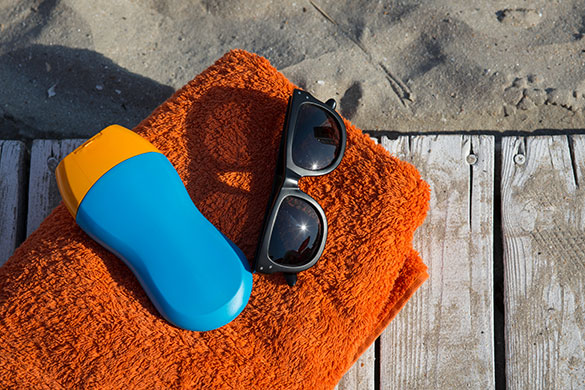How to Choose and Properly Use Sunscreen

One of the most common things I do as a dermatologist is diagnose and treat skin cancer. Therefore, one of the most common things I spend a lot of time talking about is sunscreen. Patients always want guidance on how to pick the right product, and with hundreds of different products on display at the local store, who wouldn’t be confused?
Should you stick with a certain brand name? Should you buy a lotion, spray, foam, or stick? Should you pay the extra money for the SPF 100+? How much should you put on? How often should you reapply?
Guidelines
Here are some guidelines to help answer your questions.
SPF:
The American Academy of Dermatology recommends an SPF of 30 or higher. You’ll notice at the store that as the SPF number increases, so does the price of the sunscreen. If applied correctly and reapplied often enough, an SPF 30 will get the job done. However, if you aren’t putting enough on or reapplying often enough, increasing to an SPF of 50 or 80 does help make up for (but not correct) some of that application error. Bottom line – don’t choose a sunscreen with SPF less than 30, but you probably don’t need the SPF 100+ either. Choose something in the middle.
Broad spectrum:
Sunscreens should protect you from both the sun’s UVB and UVA rays. Both UVB and UVA contribute to skin cancer and premature aging. The SPF number applies only to the UVB protection. However, new labeling requirements for sunscreens passed in 2012 by the FDA have made finding UVA protection easy for consumers – if the words “Broad Spectrum” are on the front of the bottle, you’re covered for both UVB and UVA protection. If they aren’t, move on.
Water resistant:
By law, sunscreens are no longer able to claim they are “waterproof” or “sweat proof.” Instead, new labels either state the sunscreen is “water resistant 40 minutes” or “water resistant 80 minutes.” The label will also instruct you to reapply immediately after toweling off and at least every two hours.
Ingredients:
Not all sunscreens have the same active ingredients. This part requires you to actually look on the back of the bottle under “Active Ingredients.” Sunscreen ingredients are divided into physical blockers and chemical blockers. In general, physical blockers provide better protection. They are broader spectrum and are less likely to cause skin rashes. Because of this, many sunscreens marketed towards babies or people with sensitive skin contain only physical blockers. The only two physical blockers are zinc oxide and titanium dioxide. Remember when lifeguards used to have white noses? That was zinc and titanium. Luckily these ingredients are now micronized so they appear translucent on the skin.
How Much to Apply and How Often to Reapply:
Almost everyone fails in this category. To get proper protection in a bathing suit, you have to put on a full one ounce of sunscreen to your exposed skin. Coupled with reapplication every two hours, this means you should easily go thru a bottle of sunscreen during a weekend at the lake. Not putting enough on and not reapplying often enough is the most common mistake with sunscreen use.
Lotions, Sprays, Foams, or Sticks? Sunscreen now comes in a variety of forms. Choose the form that feels best on your skin and is easiest to apply (and reapply!) for you. Men and young kids often like the ease of sprays – just make sure to get full coverage to avoid “streaks” of sunburn.
Quick Takeaways
- Choose a sunscreen that meets the following three requirements on the front of the bottle:
- SPF 30 or higher
- Broad Spectrum
- Water Resistant
- Look on the back of the bottle for zinc oxide or titanium dioxide as an active ingredient.
- Remember to apply in sufficient amounts and reapply every two hours.
By: Jenny Nelson, MD


